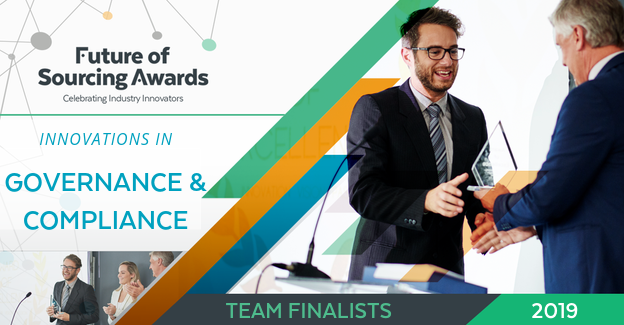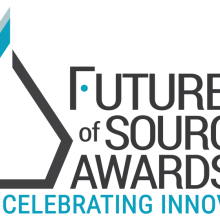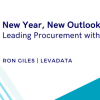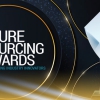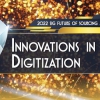Can you outline why your team embarked on this project and the problem that needed to be solved?
Our Procurement team took over the process to identify vendor inherent risk from our Third Party Risk Management (TPRM) group. The process we acquired was driven by email and shared drive folders. We were receiving an average of 70 emails per week, and this manual, high volume process was ripe for human error.
We decided to develop a digital intake solution, which would create single point of entry. The company had just rolled out SharePoint and we decided to leverage that platform to create the intake solution. We realized that we could also leverage the workflow capabilities of SharePoint to capture approvals and move vendor on-boarding requests to the various groups (e.g. Finance, Legal, AP) across our process.
While the initial use case for the SharePoint solution was to manage the risk review process, other stakeholders quickly saw the value, and we designed and built out a robust digital workflow solution for their expanded use.
How do you plan to ensure that the new model remains relevant and adapts to the future needs of the market?
Initially, the Procurement, Contracting and TPRM processes were managed through email, and folders on enterprise shared drives. Individuals would develop their own ad-hoc Excel based trackers to keep track of the very manual process steps. We were also required to store multiple emails, documents and approvals as evidence for audit purposes. The manual nature of the process and heavy document retention requirements were inspiration to develop a solution that would automate many of the non-value add steps.
What KPIs did you use to measure success for this project? (For example: performance, customer satisfaction, revenue, sales or relevant financial gains?)
We measured success for the project using the following metrics:
- Improved efficiency: Time saving of ~5 hours of FTE time / week
- Reduction in email requests: Average reduction of 70 emails
- Strengthened controls through automation and digital tracking – the workflow solution enforced and tracked two approvals:
- Business approval of the spend
- Finance approval of budgeted amount
How you plan to ensure that the new model remains relevant and adapts to the future needs of the market?
We have a process to receive enhancement requests from our end users. Those requests are assessed by the benefit they will deliver and complexity to incorporate. We then prioritize accordingly. Once new functionality is built, we test the enhancements before rolling them out to the broader end user organization. This process has enabled us to deliver multiple enhancements since our initial roll-out.
What advice do you have for those who may want to implement this innovative approach in their own organizations?
While there are many off the shelf solutions available, for those with the appetite, we recommend considering the tools your organization may already have available, to develop a solution to meet your needs. By doing so, we were able to develop a custom, scalable solution in a short time frame. We did not have to rely on Technology resources for implementation, and we also have ownership to administer our own enhancements.
We recommend taking a structured approach to development:
- Conduct outreach to your stakeholder group to understand their pain points
- Clearly define the problem(s) you are trying to solve
- Document future state processes including any enhancements, automation, etc. your solution will deliver
Return to your stakeholder group to gain buy-in on the future state
- Build your solution
- Test your solution
Consider identifying a few end users to pilot the solution and provide you with feedback
- After refining accordingly, roll-out your solution with appropriate communication and support tools (FAQs, training material, job aids, etc.)
- Implement continuous improvement by continuing to invest in enhancements to the solution
How did you get your company and/or stakeholders to get on board and support this project?
We were able to garner support from our organization by articulating the value it would deliver to impacted stakeholders. For example, the solution minimized confusion for our business users by providing a single point of entry for vendor requests. For our Procurement organization, the solution provides visibility in a dashboard view of their workload. And for our Risk and Audit organizations, required approvals and documentation are trackable and accessible.
We also invested the time upfront in developing training content that was published on our company’s intranet site. This enabled our end users to self-serve and easily access information regarding the new tool.


